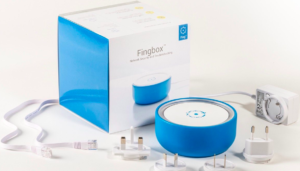Cybersecurity in the home is as weak as a cokehead’s nostril, but the Fingbox is an excellent device that protects the domestic environment from web prowlers, snoopers and black hats.
There’s a 1960s pulp Sci-Fi film that terrified me as a kid; my trauma must have been so complete that I can’t (or won’t) remember its name. The terror it engendered was because of a TV that monitored people’s homes, even in the bedroom.
It was like a rubbish 1984, but it was still horrifying, the only good news being that it was impossible to happen in my lifetime. Ha! Thank God I didn’t know at the time that n 2018 everybody with a decent broadband connection has opened their doors, TVs or devices to anybody who wants to watch.
The ignorance and fragility of IoT devices, especially those in the home, are staggering. Easy-to-read passwords, an internet this is rarely switched off and bad people looking for a way in have it easy.
So step forward the Fingbox, a physical device that works with a downloadable app that warns of any external infringements and works somewhat better than a tripwire and a can in the back garden.
The Fingbox is not cheap, but what price piece of mind? Retailing at £125 from THAT website that also constantly monitors you, it connects to the home router and offers a range of services to protect the home.
Technical Specifications
* Monitoring of all wired and wireless devices on a network
* Two-year warranty
* No subscription fees
* 1 GB/s Ethernet port
* ARM 7 processor
* 4GB home board storage
For somebody like me, and you too I would suspect, it takes time to set up the Fingbox and to connect it with the app, but for those who know their tech (not least the bullet-points above) it should be easy.
When I had finally got it working, I really felt safer and, more worryingly, it has already flagged up attempts to tap into my home network. Those people REALLY are watching, it’s not Sci-Fi, it’s here and cannot be ignored.
Take your home security seriously. There are other products out there that offer the same type of protection, but I would look at the Fingbox first, it could be your friend in the future.

